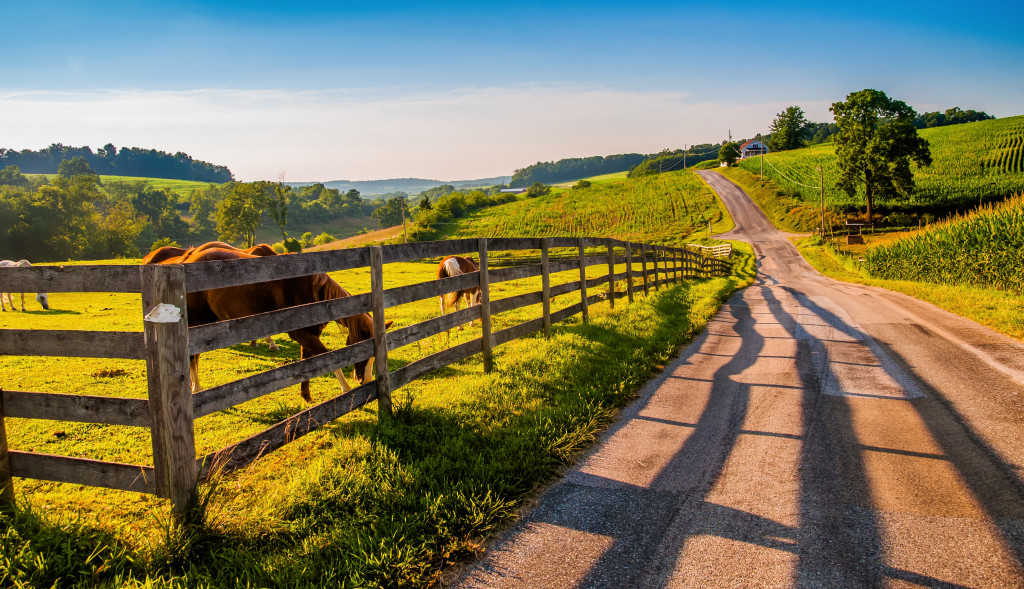- Analyze land capability to determine what activities are suitable for the farm.
- Acquire essential supplies such as farming equipment, crop protection products, feed for livestock, and farm maintenance supplies.
- Utilize digital and traditional marketing tactics to reach new potential customers.
- Invest in organic or high-value crops/livestock to maximize returns.
- Gain insight into local climate patterns to ensure efficient planting schedules.
Starting a small farm is a reasonably profitable venture with the potential to generate significant returns over time. Statistics from the U.S. Department of Agriculture show that small-scale farms generated more than $1.7 billion in total sales, with an average gross income of $45,753 per farm. This is compared to mid-level and large farms, which earned around $200,000 and $2 million, respectively.
The profitability of starting a small farm can be further increased by focusing on high-value crops or livestock, such as organic produce or heirloom vegetables. As demand for these products grows and prices rise accordingly, farmers can potentially make significant returns on their investments. According to data from the Organic Trade Association, organic food sales in the United States grew 11 percent and are expected to reach $50 billion by the end of 2023.
However, starting a small farm without experience and capital can be challenging. Here are some of the critical steps to consider:
Analyze Land Capability
The most important consideration when starting a small farm is the land that is available to you. Analyzing your land capability can help you determine how to operate your small farm best. When doing so, you must look at several factors.
You must consider the size and shape of your land as different farming activities may require more or less space. More extensive land will allow you to grow crops or keep more animals. On the other hand, if you have limited acreage, it is essential to prioritize certain activities over others to make the most efficient use of your resources.
Secondly, soil fertility should be examined closely, as this will affect the quality and yield of crops grown on the property. You can do this by testing the pH levels of your soil and its nutrient and organic matter content. Additionally, understanding what pests and weeds may be present on your land will help you inform which crops would be suitable for growing in these conditions.
Thirdly, climate should also be considered when evaluating available land capabilities. Different farming activities require different temperature ranges and precipitation levels to reach their full potential yields. By understanding the local climate patterns, such as temperature variations across seasons, farmers can ensure that they plan their planting schedule accordingly and maximize their harvests throughout the year.
Get Essential Supplies

Starting a small farm requires more than just land and knowledge. Acquiring and maintaining crucial supplies is essential to ensure that operations run smoothly. These will help ensure that the farm’s goals are met in terms of profit and sustainability.
Farming Equipment
Farming equipment such as tractors, plows, harvesters, irrigation systems, and other tools are essential for a successful small farm. They help reduce time and labor costs by performing complicated tasks more efficiently than manual labor. These machines also provide valuable support when performing difficult or dangerous activities on the farm, like lifting large objects or navigating uneven terrain. The tractor is the most vital farming equipment, but securing one can be expensive. Fortunately, you can find cheaper second-hand tractors for sale to start operations. Once you profit from agriculture, you can invest in more equipment.
Crop Protection Products
In addition to farming equipment, crop protection products are needed to protect crops from pests, weeds, and diseases throughout the season. These products range from chemical herbicides and insecticides to physical barriers against animals like deer or rabbits. Organic options may also be available depending on local regulations. Crop protection products also impact productivity as they help farmers maximize yields while keeping their plants healthy throughout the season.
Feed for Livestock
If you choose to raise livestock on your small farm, you must provide them with feed that meets their nutritional requirements for growth and health. This may include hay, grain, or other supplements depending on the species of animal being raised. It is essential to research what type of feed works best for each animal before investing in it to provide maximum benefits with minimum waste or cost.
Farm Maintenance Supplies
Finally, it is essential not to overlook basic supplies required for maintaining a healthy small farm, such as tools for fencing repair, soil cultivation, and routine cleaning tasks like removing debris or scrubbing surfaces. Purchasing these items ahead of time can save farmers money in the long run by avoiding unnecessary repairs or replacements later on down the line due to the lack of maintenance today.
Market Your Products

Starting a small farm is a great way to generate significant returns over time. Still, it’s important to remember that you need customers if your business is going to be successful. One of the most effective ways to do this is through marketing.
By utilizing digital and traditional tactics such as online ads, word-of-mouth referrals, flyers, radio spots, and more, you can get the word out about your products and services and reach new potential customers. It would be best if you also considered joining local farmers’ markets or setting up shop at festivals to increase sales opportunities further. Additionally, don’t forget about social media; this powerful tool allows you to target specific audiences with tailored messages for even better results.
Final Thoughts
Starting a small farm is an excellent way to generate substantial returns. Still, it requires considerable preparation and investment in land, supplies, equipment, marketing efforts, etc. Fortunately, by following the steps outlined above, you are well on your way to developing a successful small farm with long-term prospects for profitability.

